Refer to the exhibits.
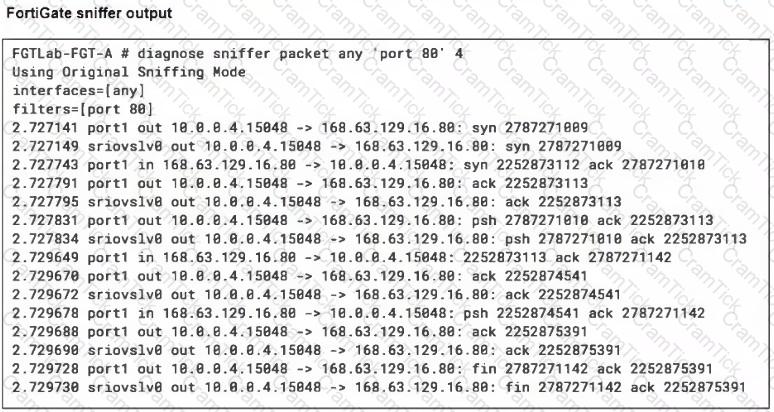
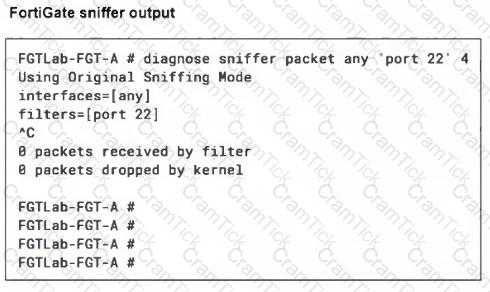
A high availability (HA) active-active FortiGate with Elastic Load Balancing (ELB) and Internal Load Balancing (ILB) was deployed with a default setup to filter traffic to a Linux server running Apache server.
Ports 80 and 22 are open on the Linux server, and on FortiGate a VIP and firewall policy are configured to allow traffic through ports 80 and 22. Traffic on port 80 is successful, but traffic on port 22 is not detected by FortiGate.
What configuration changes could you perform to allow SSH traffic?
Refer to the exhibits.
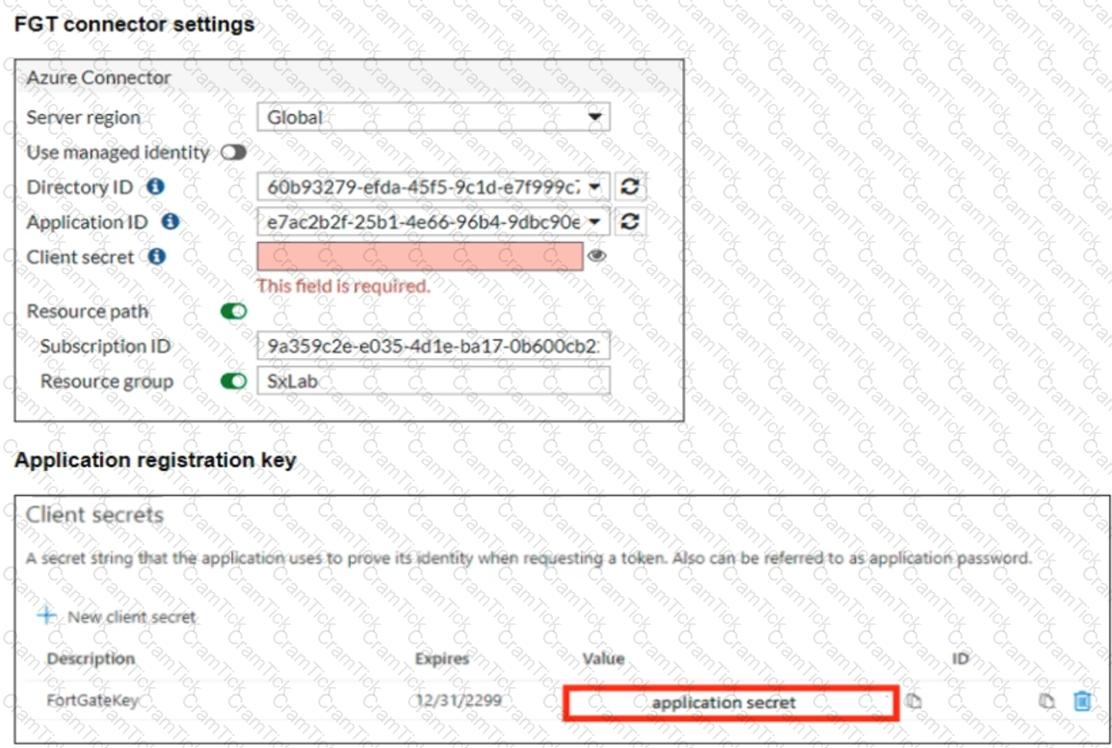
You are configuring an SDN connector for Azure on a FortiGate device You completed all the required steps on the Azure side. While configuring the FortiGate side, you notice that you did not save the client secret used in the Azure App Registration.
What is the quickest way to obtain the value of the client secret?
You are deploying a site-to-site IPsec VPN connection between your on-premise subnet and your Azure VNets.
What is the most important advantage for using FortiGate at both ends of the tunnel?
Refer to the exhibit.
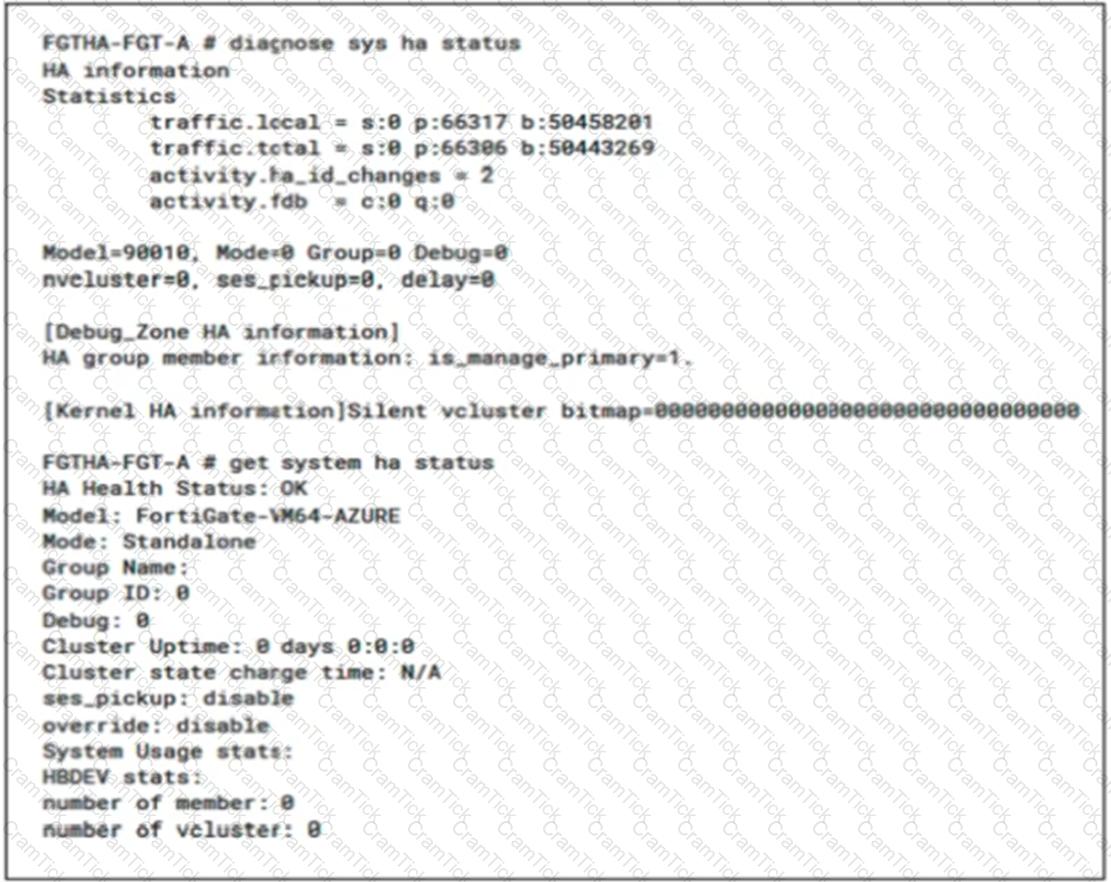
A high availability, active-active FortiGate with Elastic Load Balancing (ELB) and Internal Load Balancing (ILB) was deployed in your Azure environment.
Which tools can you use to configure synchronization? (Choose two.)
Your organization is planning to deploy FortiWeb in Azure to provide a web application security solution to its web servers. One of the requirements is to have granular control of the number of vCPUs and memory assigned to this resource.
Which cloud model could meet this requirement?
Refer to the exhibit.
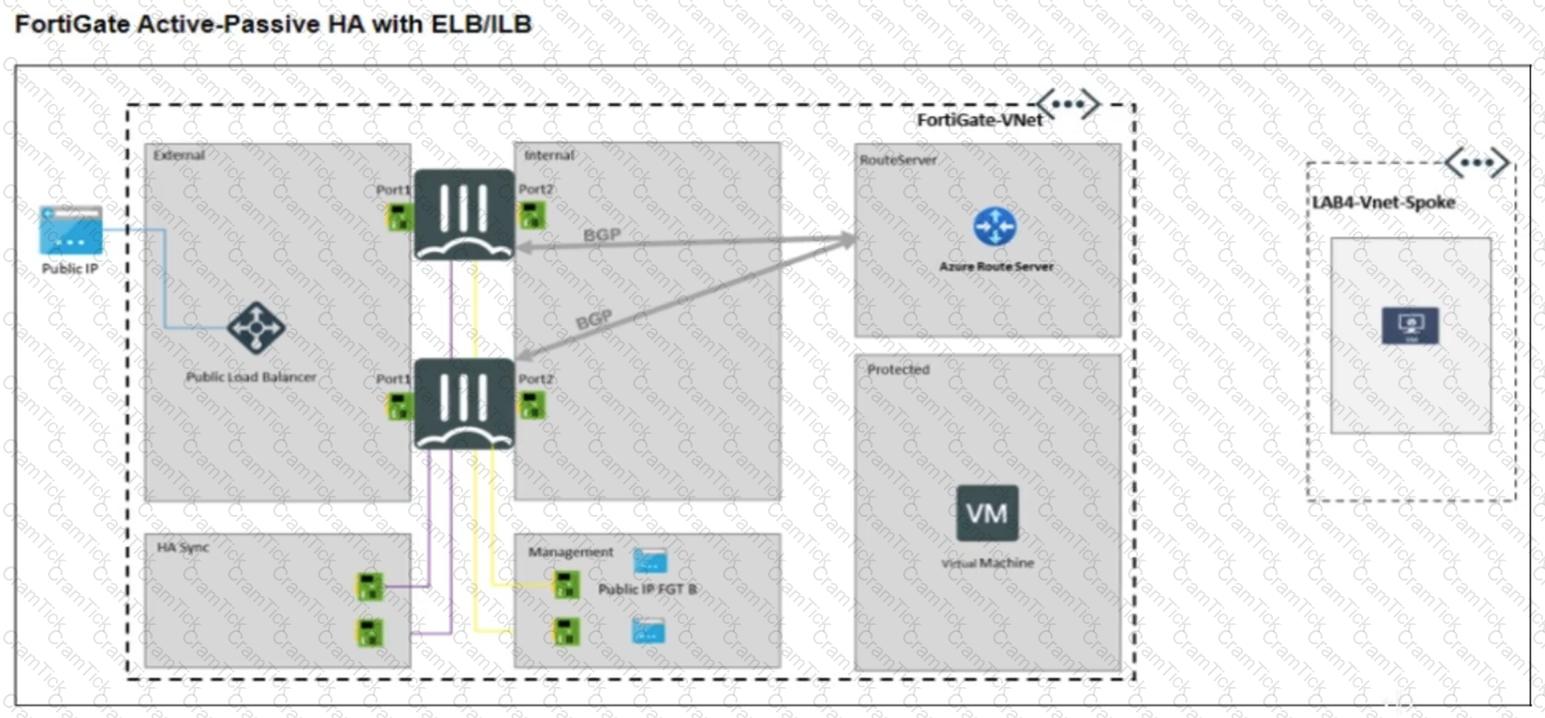
An Azure Route Server and an active-passive FortiGate with Elastic Load Balancing (ELB) and Internal Load Balancing (ILB) have been deployed successfully and they are sharing and populating BGP routes in the Protected VNet.
A Linux server has been deployed in a new VNet spoke. It is expected that Azure Route Server
should inject the FortiGate BGP routes into the Linux server but that failed.
How can you diagnose the problem?


